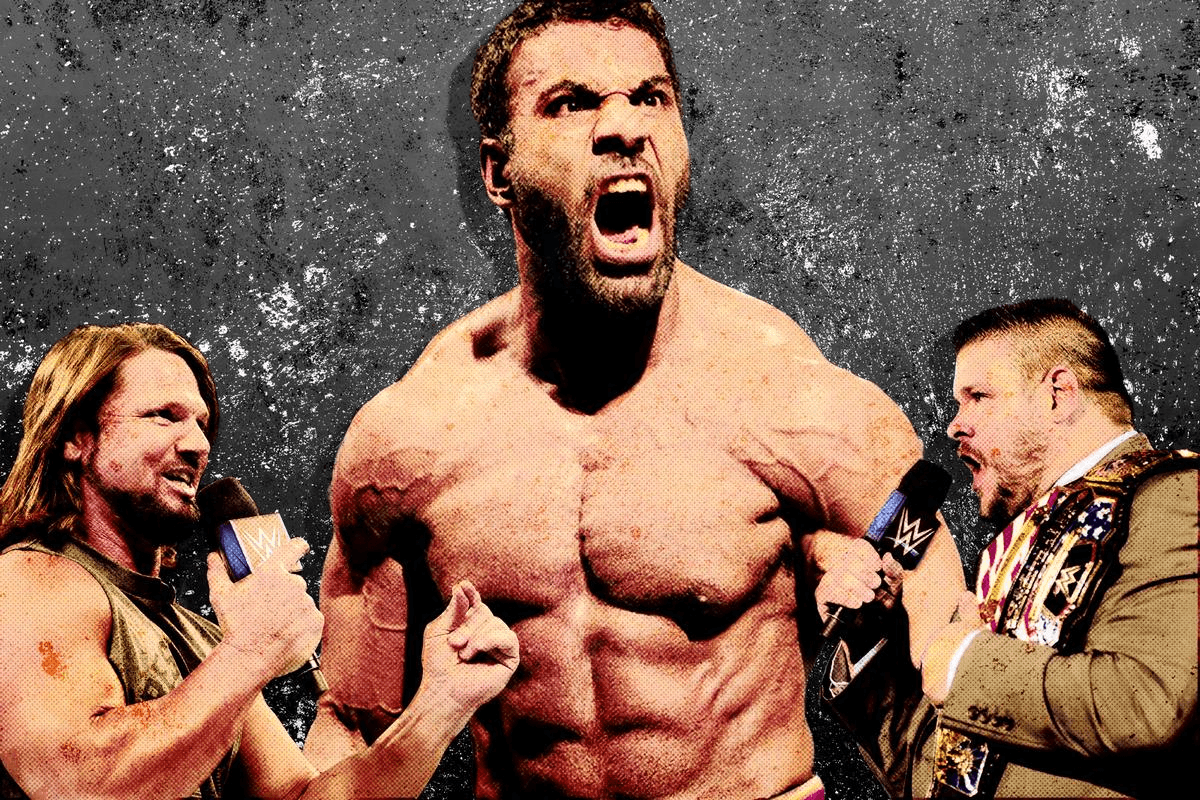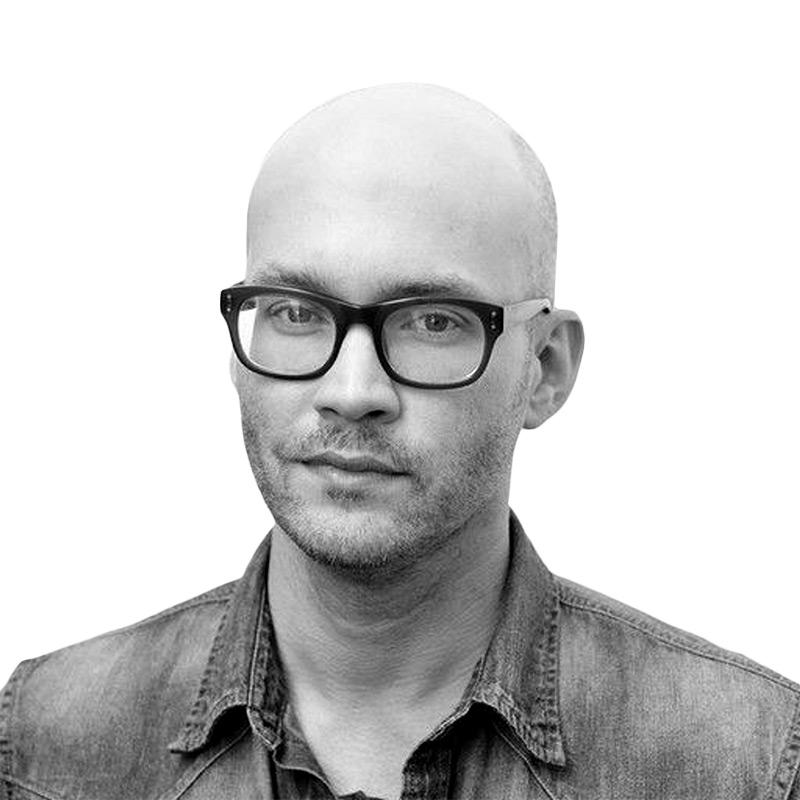On Sunday, at WWE’s Backlash PPV, the match that every wrestling fan will be looking forward to is Kevin Owens defending the United States championship against AJ Styles. Owens and Styles were the two breakout stars of 2016, but neither is an up-and-comer. Both of them have worked for years on the indies and around the world, cementing legacies that would have been real even if they’d never made it to WWE. And though they’ve both insinuated themselves into the neon fabric of the WWE mainstream, both were considered long shots to even get a chance in WWE. Today, it’s hard to fathom how incredible their simple existence on the main roster is — it’s a fact that we’re witnessing an entirely new era in the WWE.
WWE would like you to take notice of this, too. The phrase "New Era" is repeated online ad nauseum these days. During a match on Raw this past Monday, commentator Corey Graves yelled "THE NEW ERA IS BETTER THAN THE ATTITUDE ERA!" The fact that it has to be said at all — particularly while watching the Hardy Boyz — negates the point. What matters is that there’s a demonstrable new movement in the company to point at in the first place. As much as some fans complain about the current product, it’s important to remind ourselves that we’re in a much better place now than we were just a few years ago, when guys like Owens and Styles were considered insufficiently tall and muscled to make it into the main event.
Of course, as many wise people have said, the more things change, the more they stay the same.
The overall look of the WWE might have shifted away from the under-talented adonises that once dotted the spandex landscape, but there are still vestiges of the old standards. For that, you have to look no further than Sunday’s main event, which is not Owens-Styles — it’s WWE champ Randy Orton squaring off against Jinder Mahal.
Mahal is a throwback to an era of form over substance, but he’s more than that. He’s also a throwback to a mode of broad foreigner stereotypes — a mode that, it should be said, is never too far from center stage in WWE, what with "the Bulgarian Brute" Rusev, who is such a throwback he evokes a self-parody of type. If the heyday of the style occurred from the ’50s through the ’80s, you don’t have to look too far into history to find an Umaga or Muhammad Hassan, whose character arc Mahal is currently replaying in short form. He starts as a viable competitor who happens to not be American (Mahal is an Indo Canadian Sikh, though his character leans on a more alien foreignness) and transitions by dint of dissatisfaction with the crowd reaction into a, well, radicalized anti-American menace.
When he was first signed by WWE in 2010, he was seen internally as a bridge to the burgeoning South Asian market, but rather than portray him as an international hero, he defaulted to the turban-wearing foil. But when that fell flat, he was demoted to a punching bag–to-the-stars, like the Undertaker and Kane and his current nemesis Randy Orton. He was repackaged into a trio called 3MB, a sometimes delightful posse of jobbers whose charms eventually wore off, and Mahal was sent packing in 2014.
When he re-signed with WWE in 2016, it was a return to his curtain-jerking status quo, featuring a series of matches with Darren Young on Superstars, the least significant WWE show. The most notable thing from those bouts is the specter of Jinder the physical specimen, athletic by any definition but shockingly spare when placed in juxtaposition to the Jinder that resurfaced a few months later on Raw, teaming with Rusev. Mahal was a new man: inflated, striated, and viscous, a sort of pre-modern muscle beach bod that was at once unsettling and auspicious. Almost immediately, word came out that Vince McMahon was newly impressed by Jinder’s, er, progress, and soon he was sent to the Smackdown brand, and immediately catapulted to the top of the card.
It’s impossible to consider the rise of Mahal without reconciling his physique. In the span of a few months he transmogrified from a ’90s jobber into an ’80s megalith. He claims to have passed every test he’s been given under WWE’s Wellness Policy, but that sounds more like an evasion than evidence of proof. (Comments on Mahal’s own Instagram account are liberally salted with terms like "gyno" and "bacne.") Whatever he’s done to supplement his growth — and if it’s indeed all natural, dude should be marketing his system to the masses — it’s worked wonders for his in-ring presence, if not his in-ring skill. He wrestles with some vestigial fluidity, but he often moves with a creaking overdetermination, as when he dangerously clobbered (and possibly concussed) Finn Bálor several weeks back.
Which is not to say that he’s a total performance liability. He’s sort of like a heady but slow help defender in the NBA — he’s Dirk or Kevin Love, unspectacular but always in the right place. He held his own in the six-pack challenge match in which he earned the match with Orton, and he had a very good match with AJ Styles this week. Orton has an indecipherable chemistry that for all we know might suit Mahal on Sunday. But they’ll have a tough time following Owens-Styles, despite the visual spectacle that Orton and Mahal squaring off will be.
The comparisons to Owens and Styles are larger than the question of stature vs. skill, though. This isn’t just about who’s better, or who’s more deserving of the spot on the card. It’s about being a heel in 2017. Traditionally a wrestling bad guy is the asshole who’s terrorizing the hero — the rulebreaker, the whiner, the loudmouth. It’s not calculus, it’s assignation: the heel is the guy who’s playing the heel. But in the postmodern era we’re now in, those rules don’t apply. The biggest heels in wrestling over the past decade have been John Cena and Roman Reigns, both of whom are presented as babyfaces. They’re heels because they’re perceived to be given everything by WWE, irrespective of the reaction they get from the crowd. They are booed because — either by their lack of skill or by the crowd’s dissatisfaction — they don’t deserve to be in the dominant position they’re in. There are still traditional heels, of course — the aforementioned Rusev, who’s hated more for his attractive wife than his foreignness; Bray Wyatt, who gets by on inane promos and unmet expectations; and the Miz, who may be the only old-school heel working at a high level in wrestling today. He’s reached such a level of success that fans are already bracing for the face turn that will ruin him.
See, modern fans love the bad guys. There’s a whole class of villains who are either cheered outright or booed out of respect for their craft: Styles (until his recent shift back toward the light), the inimitable Paul Heyman, and the Canadian-born Owens, who has ramped up his despicability of late by speaking French — another throwback to the Foreign Menace playbook. In a new era populated by multitalented strivers who have had to struggle to reach the big time — epitomized by Daniel Bryan’s run from the indies to the WrestleMania championship match a few years ago — the only true hatred that fans have for wrestlers in 2017 is toward those deemed undeserving.
And that’s where Jinder Mahal’s greatest power lies. He doesn’t deserve it. He didn’t work his way to the top with a series of great matches or deep character development. He flexed his way to the main event, seemingly gifted the spot by virtue of his newfound physique. There’s a phrase that gets tossed around in wrestling circles when somebody complains on technical grounds about how much they hate a villain: "You’re getting worked, bro." It’s a dismissive sentiment, but it belies a weighty notion: Is it possible to get roped back into the irrational hatreds of our wrestling-fan childhood, not by plain villainy but by smarmy antagonism? Are diehard wrestling fans too clued-in to be self-aware? If so, with Jinder, WWE is exploiting that market inefficiency to its full extent.
The most infuriating thing that he borrowed from evil foreigners of years past isn’t anti-patriotism — it’s the dreary obviousness of the whole thing. Big bad shows up, gets his title shot, and proceeds to insist upon his legitimacy. That sort of thing doesn’t work anymore.
Except, well, it does. We’re booing. We’re mad that he’s in the main event at Backlash. We’ll be actively rooting for him to lose — against Orton, no supernova of charisma himself — and to get bumped back down the roster into another jobber role. We’ll boo him every time his veins pop out of his arms, at every botched spot, at every moment when the match pales in comparison to Owens-Styles. We’ll boo him for all of these reasons, and probably a little extra when he runs down American ideals — it’s a Pavlovian form at its heart, after all. But we’ll be booing sincerely. And in 2017, that’s the most amazing throwback of all.


